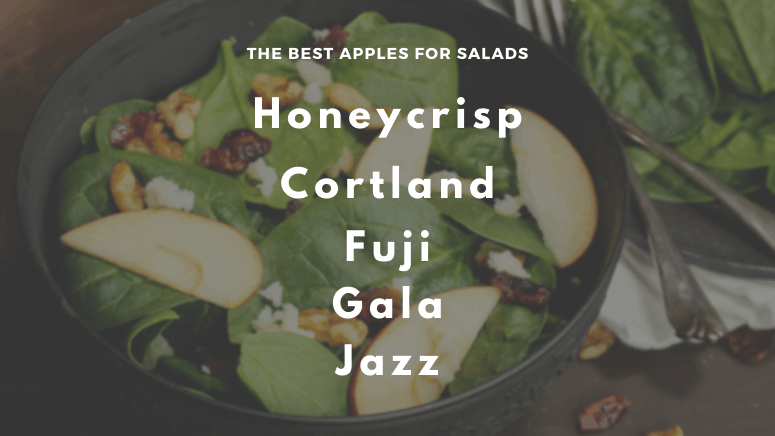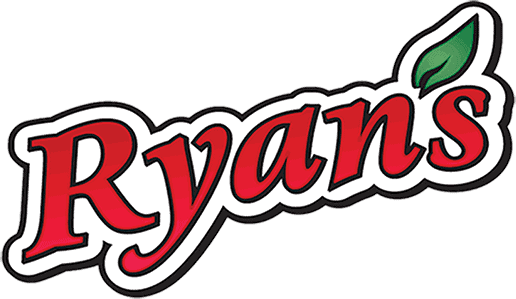



Alan Park
Blog Editor
The Best Apples for Every Use














Apples are delicious pome fruits from the Rosaceae family that originated in central Asia and later got moved to Europe in an earlier period than the Greeks. Apples came into the new world in the XVI century, and they are part of the American culture because they are nutritious, tasty, and have a variety of uses. Apples were a good food source for settlers due to its ease to store and transport.
The only apple type that is native to North America is the crabapple. The Europeans didn’t like this variety because it wasn’t sweet but rather too sour and tart. As a result, they brought their apple varieties to North America and today, there are anywhere from 7,500 to 15,000 apple varieties, with so many options the question persists, what type of apples do I need to use for baking, snacking, applesauce, jam, fermentation, and salads? What apples to use?
Although people might say its personal preference, there are specific characteristics we look in apples depending on its use, such characteristics are flavor profile, sweetness, sourness, tartness, pH, bitterness, juice quantity, raw texture, tannins, and cooked texture.


The Best Apples for Baking
When you are choosing apples for baking, choose the ones that are not overly sweet. You want apples that have some tartness and allow you to balance it out with some added sugars and butter from your baking recipe. Choose apples with firm textures (not grainy or sand-like texture), and that can hold well after its cooked. You don’t want your apple pie to collapse and become an applesauce pie, rather you want to feel the individual apple slices.
- Granny Smith: They are a favorite for slice-dipping and baking. Granny Smiths are tart, crisp, sour, and hold extremely well in the oven.
- Jonagold: Their mild sweetness and tart notes make this apple variety tangy-sweet. They can hold well in the oven too.
- Braeburn: Sweeter than Granny Smiths and with a hint of tartness, Braeburns will release its juices in the oven but won’t get mushy, they are crisp, sharp smooth, and very fragrant. Consider using a blend of Granny Smith and Braeburn.
- Honeycrisp: Honeycrisp apples are great for most typical uses (besides fermentation), they have it all, sweetness, tartness, and good crisp. They are very firm and hold well in the oven.
- Pink Lady: This apple variety has a good balance of sweet and tart. If you don’t peel the skin you will get more of the tannic notes, which you might enjoy. They are crunchy and hold shape very well.


The Best Apples for Applesauce
For applesauce, the amount of sweetness in the apple doesn’t matter as much since most people choose to add their sugar to taste. Therefore, if you are using naturally sweet apples, use less sugar and if you are using sour apples, add more sugar. However, you want to make sure to use apples that have a softer mesocarp and that could it break apart faster when exposed to heat.
- Cortland: Coming with a soft mesocarp while maintaining a good shape, Cortland apples are sweet, mildly tart, and don’t brown as fast as the other varieties on this list.
- McIntosh: These apples are very soft, they don’t maintain their shape, they are juicy and tart-sweet which makes them perfect for apple sauce.
- Fuji: Fuji apples are firm, crisp, sweet, very juicy, and hold their shape well. The taste of Fujis are great but you might have to cook them for a little longer if you are not into chunkier apple sauce.
- Braeburn: Sweet, tart, and very juicy, this apple will make your applesauce very tasty, fragrant, and smooth.
- Gala: Gala Apples don’t have a strong flavor but they are sweet and crisp. Make applesauce with Galas when you are looking for a mild flavor.


The Best Apples for Jam
This one is tricky since it depends on what you are trying to achieve. Softer apples will make a more uniform jam whereas firm apples will make a jam with more apple chunks. Consider using a mix of both to achieve complex flavors.
- Cortland: Cortland apples are not as firm as Honeycrisps nor as soft as McIntosh. Instead, they have medium hardness. This texture allows you to make a jam with good density and more consistency.
- McIntosh: This variety will not hold its shape if cooked. It is very juicy and has a good mix of tart and sweet.
- Golden Delicious: They are sweet and rich in flavor, the apple will melt when cooked, making it great for jams.
- Pink Lady: Even though Pink Lady apples are firm, you can always make a jam more homogeneous by cooking it longer. They have a nice balance of sweet and tart so it will make your Jam pop in flavor.
- Red Delicious: They are sweet and very watery, the texture is not very firm and it cannot hold its shape when exposed to heat. Making Jam might be the best thing to do with a Red Delicious apple.


The Best Apples for Salads
For salads, you want to choose firm apples, don’t brown as much, and are sour. Sweet, sour, and firm crunchy texture will add complexity and excitement to your salad, especially if you are doing a vinaigrette.
- Honeycrisp: Firm, sweet, and tart. If you don’t mind a little bit of acidity this should be your go-to apple.
- Cortland: Sweet and slightly tart, Cortland apples don’t brown when sliced, this makes them the #1 for salads.
- Fuji: Fuji apples are not sour, they are sweet and juicy. They also hold their shape extremely well. Imagine putting Fuji apples in your salad and finding an explosion of sweet juice when biting into it. If you are not a huge fan of acidity in salads, Fuji apples are your best option.
- Gala: Gala apples are sweet and the texture makes it appealing to use it on salads.
- Jazz: sweet-tart, crisp, and juicy. For better results, consider dicing or cutting them in medium-sized cubes.
Pro tip: Instead of cutting the apples in cubes, try slicing them with a potato peeler to get long and thin pieces of apples. To keep them from browning, dip them in icy water with a touch of lemon until they are ready to be used.


The Best Apples for Snacking
American culture grew up to appreciate sweet and crunchy apples. If you expect an apple to be crunchy but then you bite into it and it is soft you will be disappointed. There are about 15,000 apple varieties, not all of them are sweet and crisp. Train your palate to appreciate all the different kinds of apples that are out there, you might enjoy it.
That being said, here is a list of sweet- crunchy snacking apples most Americans will enjoy:
- Ambrosia: Ambrosia means “food of the gods” the Greeks called it that because it has low acidity and is sweet.
- Braeburn: If you want an apple that excites every taste bud, and it is not only sweet. Try Braeburn apples, they are sweet-tart, firm, and very juicy.
- Gala: Gala apples are crisp and sweet.
- Fuji: Crisp, firm, juicy, and sweet. Eating a Fuji is like eating candy!
- Honeycrisp: Last but not least, Honeycrisp apples are great for snacking. They are sweet and tart so it will make a more interesting experience than eating just a sweet apple, like the Fuji.
Pro tip: Do not peel your apples, a lot of the nutrients are found in the peel such as the flavonoid epicatechin. If you are packing it for later, do not cut your apples to prevent browning from oxidation.


The Best Apples for Juice
If you put your apples inside a blender, you will be just blending it, not making juice. Make sure you press the pulp or use a juicer to make apple juice, otherwise the result will be a thick, applesauce-like mush. If you don’t like the thickness of the apple pulp, filter it with a clean cloth.
- Honeycrisp: If you are looking to add sweetness and tartness at the same time, this apple will do the job.
- Fuji: Sweet and juicy, Fujis are a great variety that adds sweetness to your juice.
- Ambrosia: This apple has low acidity, they are sweet but not as sweet as a Fuji, making the Ambrosia a healthier option.
- Granny Smith: This apple will not make a sweet juice, it will be sour and low in natural sugars. There is nothing wrong with that and it can still be enjoyed by itself. Consider mixing Granny Smiths with Fuji or Honeycrisp apples.
- Red Delicious: The texture of the Red Delicious is not as firm as the other apples. If you are going to filter your apple juice and remove the pulp, use the sweet-tartness of the Red Delicious.
You can see the types of apple juice we make by clicking here


The Best Apples for Hard Cider
Fermentation is an entirely different monster. Before choosing apples for hard cider, plan ahead of time the flavor profiles you want your hard cider to have. Do you want Strong tannins and polyphenols? Sweet apple taste? Funky and exotic flavors? If you are not sure yet, follow this list with our favorite apples for hard cider:
- Newtown Pippin (Heirloom Apple): Newtown Pippin apples have a rich aromatic flavor with nuances of pine, they are sweet and tart. Newtown Pippin is the Rolls-Royce of apples.
- Winesap (Heirloom Apple): With fewer juice pockets, great aromas, sweet-tart flavor, and spicy nuances. Winesap apples add sweetness and complexity to the fermentation barrel.
- Rome Beauty: Rome Beauty apples are not Heirloom apples but they are sharp, refreshing, very aromatic, and smooth. Their thick red skin might add some tannins and tart undertones to your cider.
- Gravenstein (Heirloom Apple): This variety has a balanced flavor of both sweet and tart, which makes it perfect for fermentation. Some people say it has wild-honey nuances. They are very juicy and crisp. The gradient of red, yellow, and green on the skin shows how many different flavors it can develop if fermented.
- Braeburn: This is the tartest apple from the list. It has some hints of sweetness, and just like the others, it is very aromatic, crisp, and juicy.
Make sure you do your research on other factors besides apple variety since other variables such as water, apple specs, temperature, season, humidity, yeast, flavorings, oxygenation, fermentation period, and more, can affect your cider.
Some people swear for heirloom apples, these are apples that were passed down for generations, unlike the apples you will find on grocery stores. They are sweet but can also be very bitter. For this reason, some of these apples are never used for eating raw or baking, only to make hard cider.
The notion that all the bad apples can either be thrown to the pigs or in the fermentation pot persists until this day, but if fermentation can do wonders with bad apples, imagine what it can do with good apples?
Lastly, farmers that grow Heirloom apples say that this variety is the best for fermenting since it develops unique flavor profiles, better tannin levels, higher alcohol percentage due to its sweetness, and the high acidity helps prevent off-flavors on the hard cider.
You can request a quote to buy bulk juice by clicking here
Sources:
Story, S. (2017, November 08). DIY Cider Making #4: Apple Mania!: Types of Apples for Making Hard Cider. Retrieved July 08, 2020, from https://www.ciderculture.com/diy-cider-making-4-apple-mania/
Pippin, O., Okano, P., & Jessica. (2011, June 18). Apple – Newtown Pippin. Retrieved July 08, 2020, from https://www.orangepippin.com/varieties/apples/newtown-pippin
TheSpruceEats, allrecipes, thekitchn, bonappetit, eatingwell, washingtonian, 906outdoors, harvardmuseum.
